
In 1985, an organization was established called the New Kensington Community Development Corporation (NKCDC), to improve the combined areas of Kensington and Fishtown (two residential-and-industrial neighborhoods bordering the Delaware River). During its first decade of activity, NKCDC established a good record in rehabilitating vacant buildings, by using neighborhood-driven programs where community members set priorities. During discussions about future goals, neighbors described a need beyond rehabilitation of buildings.
NKCDC learned that many people were particularly concerned about derelict vacant lots scattered across the neighborhood, where—over a period of more than 30 years—abandoned row houses had been demolished. In Kensington, for example, there were 2,000 parcels (out of a total of 8,500) that were empty of housing. Although 900 of them had already been absorbed into the physical fabric of the neighborhood—for example, acquired by residents as side yards or as plots for putting up garages—the remaining 1,000 were still abandoned and unused.
In the mid-1990s, NKCDC launched a community-wide program to enhance vacant land. The goals were to find constructive uses for those parcels and to make plans in consultation with neighborhoods residents. Funding support came from two local foundations, The Pew Charitable Trusts and The William Penn Foundation. Technical assistance came from Philadelphia Green (a program of the Pennsylvania Horticultural Society).
NKCDC partnered with city agencies on long-range problem solving. For example, it encouraged the Department of Licenses and Inspections (L&I) to improve its handling of demolitions. By using more sophisticated cleanup methods, L&I now makes it possible for the community to give a "horticultural" treatment to its vacant lots. This "greening" helps prevent the offense of trash dumping and the spread of weeds.
Additional NKCDC initiatives for improving vacant land include:
- building a garden center (Frankford Avenue at Berk Street) that provides information and advice, serves as a clearing house for donated landscaping materials, and includes a community garden
- creating a side-yard acquisition program, which enables people to obtain abandoned empty parcels that are adjacent to their houses
- "cleaning and greening" more than 350 vacant lots
- developing more than 20 community gardens
- facilitating the
creation of a nonprofit enterprise, Greensgrow Farm, to produce gourmet
vegetables
Greensgrow Farm is on the three-quarter-acre former site of Boyle's Galvanized Steel plant, demolished in 1988. Contaminated with lead and zinc, the soil was cleaned up in compliance with regulations of the Environmental Protection Agency. However, the two partners who started Greensgrow Farm in 1999 decided it still made public-relations sense to use a hydroponic system, where crops grow in tubs of water or sacks of imported soil. The urban farm’s specialty is baby lettuce sold to upscale local restaurants, although founder and still owner, Mary Seton Corboy (her partner has withdrawn from the business), also grows eggplants, onions, radishes, zucchini, artichokes, potatoes, carrots, and 10 kinds of tomatoes. The addition of a greenhouse now makes year-round production possible. Corboy focuses on hiring local residents and, despite the many challenges she has faced (see A Personal Perspective), still dreams of starting additional urban farms.
The success of NKCDC shows how a complex issue, in this case the problem of unsightly vacant lots, can be addressed through a combination of innovative ideas and community involvement. To date, more than 50 percent of the vacant land in the two-square-mile area of Kensington and Fishtown has been treated. Public investment is the catalyst, providing for support, planning, and the acquisition and development of property.
- In
the book Neighborhood
Recovery, John Kromer describes the strategy used by the NKCDC for
developing and improving vacant land.
(Chapter 2, "Advancing the Plan.")
www.neighborhoodrecovery.com
- NKCDC is discussed in 21st-Century Neighborhoods: Assets & Advantages of the Older American City, a 38-page illustrated booklet available from the Community Design Collaborative ($8).
- For information about the NKCDC, contact:
Executive Director
New Kensington Community Development Corporation
2513 Frankford Avenue
Philadelphia, PA 19125
215/427-0350 voice
215/427-1302 fax
www.nkcdc.org -
For additional background information, contact:
John M. Carpenter
Former Executive Director
New Kensington Community Development Corporation
johnmcarpenter@msn.com - For information about Philadelphia Green, contact
Philadelphia Green Public Landscapes
Pennsylvania Horticultural Society
100 North 20th Street, 5th Floor
Philadelphia, PA 19103
215/988-8800 voice
215/988-8810 fax
www.pennsylvaniahorticulturalsociety.org
- For information
about Greensgrow Farm, contact
Greensgrow Philadelphia Project
2501 East Cumberland Street
Philadelphia, PA 19125
215/427-2702
www.greensgrow.org
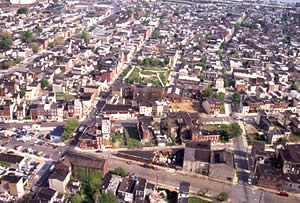
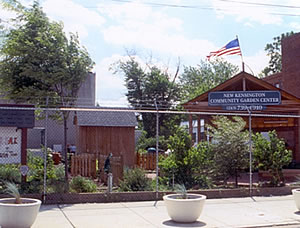
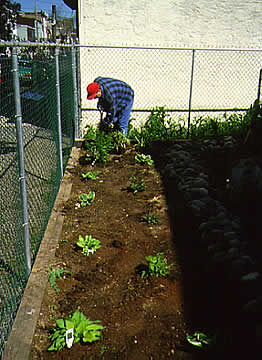
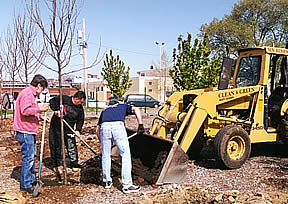
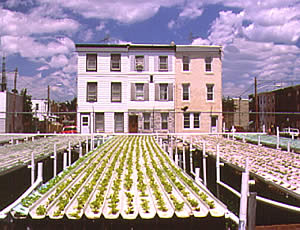
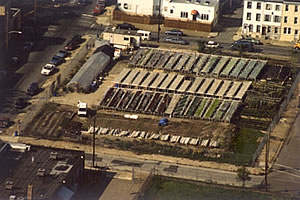
TOP • NEXT PAGE • LIST OF TOUR STOPS • MAP • P.N.R.T. HOME • YOUR COMMENTS